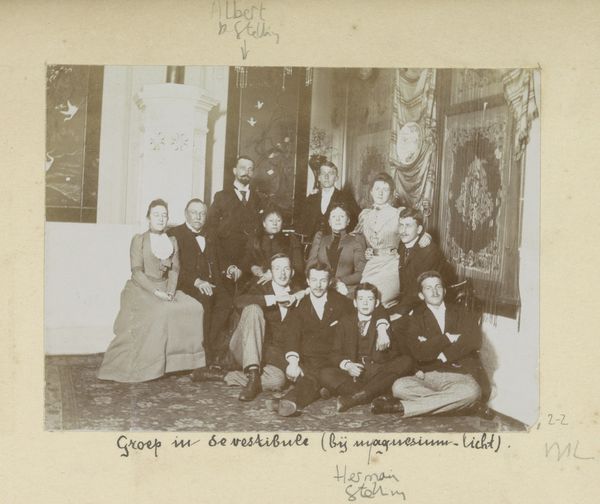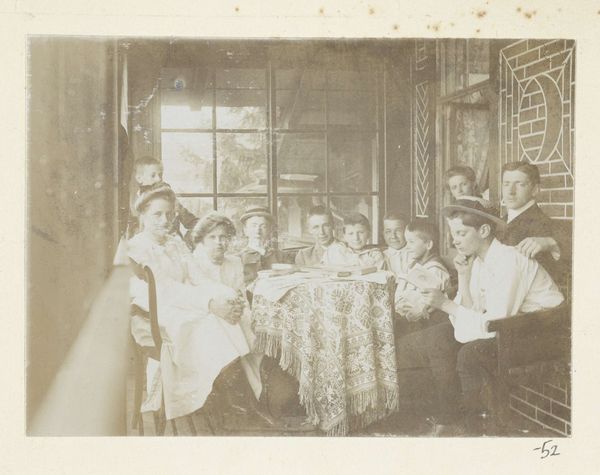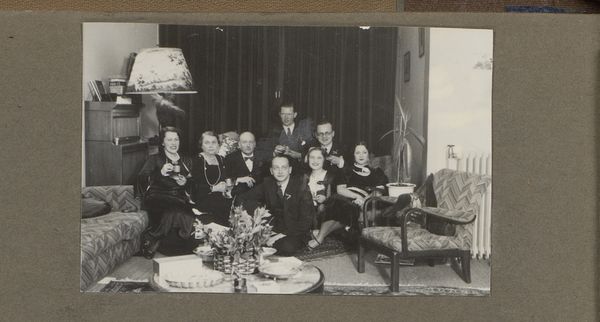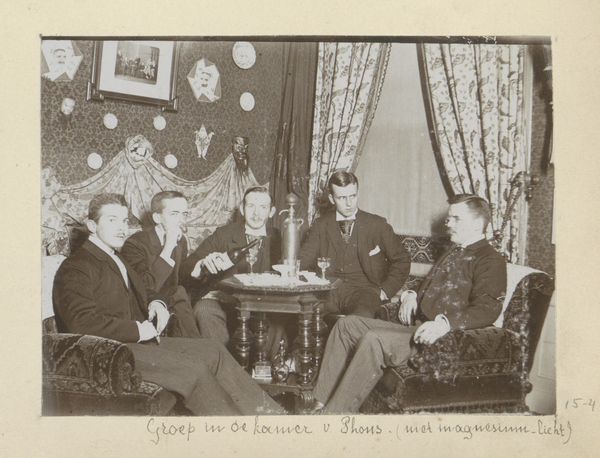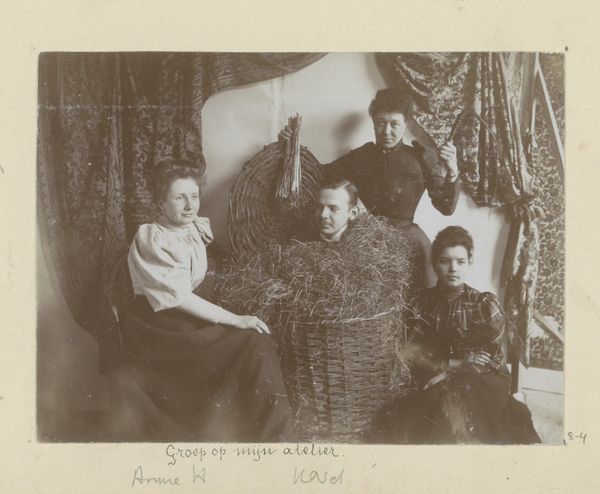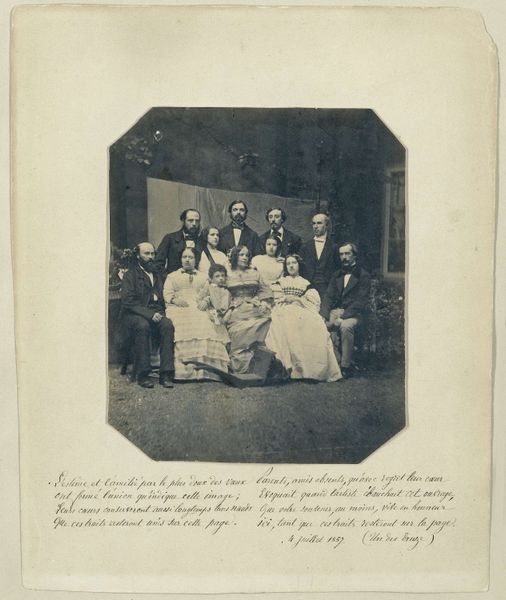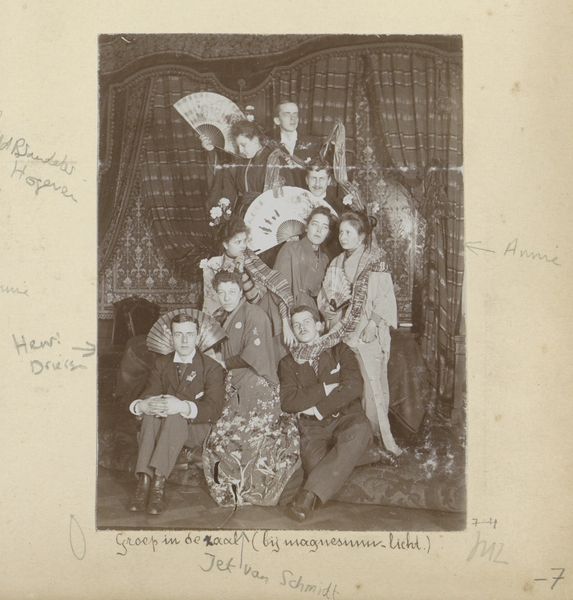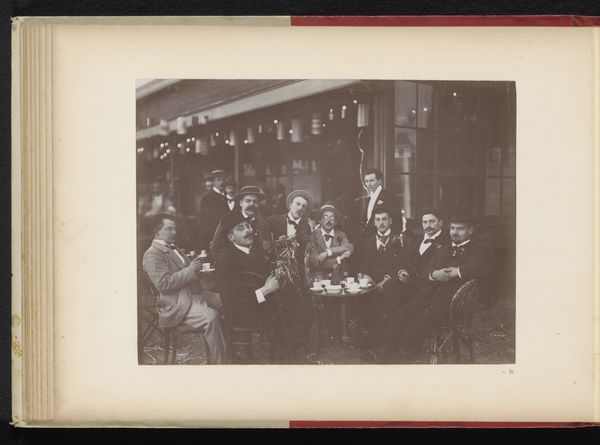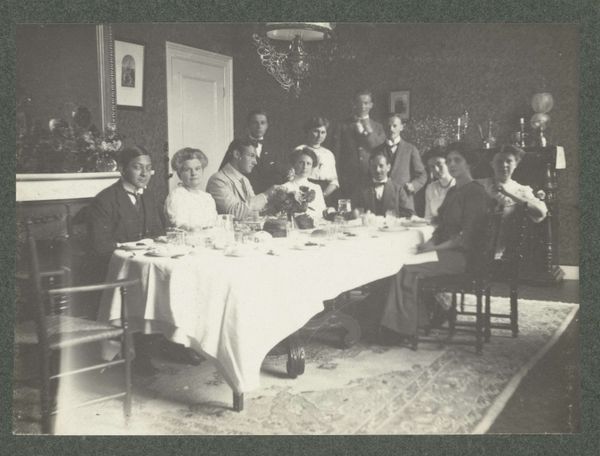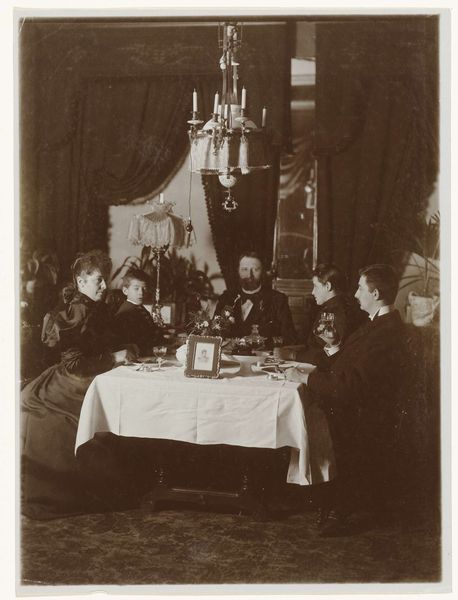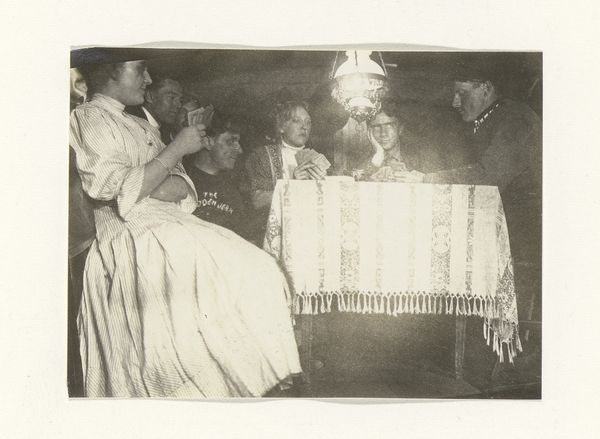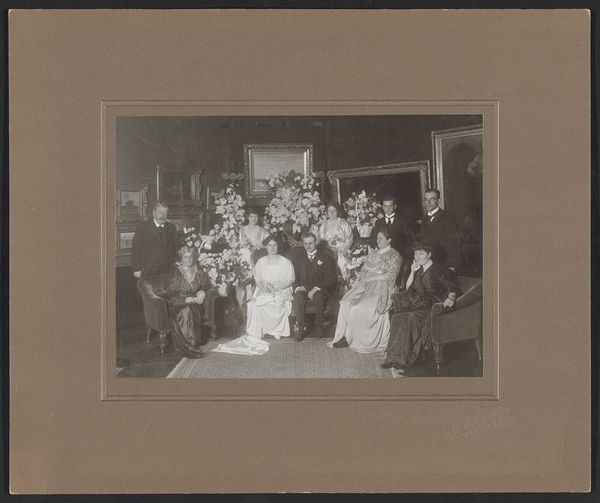
photography, gelatin-silver-print
#
photography
#
historical photography
#
historical fashion
#
group-portraits
#
gelatin-silver-print
#
genre-painting
#
academic-art
Dimensions: height 80 mm, width 108 mm
Copyright: Rijks Museum: Open Domain
Curator: Look at this photograph! It's a gelatin-silver print, believed to be created before 1894 by Hendrik Herman van den Berg. The Dutch title translates to "Group Portrait in the Vestibule with a Large Fan". There's quite a lot to unpack here. Editor: My first impression is… awkward! They all seem so stiff and self-conscious. But then, photography was a much different experience then, wasn't it? There's also a strange contrast in mood; some are stoic, some look mildly amused, and that giant fan in the foreground is undeniably comical. Curator: Exactly! It feels like a frozen moment in time, a social performance captured on film. The fan is quite a focal point, drawing our attention immediately. It also serves as a divider between those in the front and those further back. The clothing speaks volumes too - the elaborate dresses and dark suits immediately signal the era's rigid social codes. Editor: And the fan itself! In addition to being unwieldy, consider its symbolic potential—a prop meant to suggest femininity and coquetry, even though everyone in this photo is in formal attire. The inscription along the bottom speaks of magnesium light being used - an early technique in studio photography to illuminate a dark room. Given the controlled conditions and studio-like background, this image would've been a status marker, a symbol of their social standing. It also offers the artist a great opportunity to portray the setting, from clothing to home decorations. Curator: I'd add to that—consider the background decorations—screens, ceramic fixtures. Each piece feels carefully placed. The photo gives us insight into the interior design tastes and ideals of the era. What I find fascinating is the almost performative aspect of such portraits - how it's an attempt to record and shape a particular image of oneself for posterity. A way to make them part of an imagined cultural continuity. Editor: True, and I think that touches upon a deeper, and probably unspoken, tension: this attempt to stage and preserve a very particular kind of privilege at a moment of deep socio-economic change across Europe, that led to widespread demands for greater representation, equality, and justice. And these desires changed fashion, clothing and also group representation. Curator: That’s such a powerful and interesting point. The act of documenting through an expensive image reflects the power relations, which in a way undermines any intended message of belonging to one’s culture. This one photo then becomes part of a longer lineage, shaped by similar motivations and values. Editor: Seeing the art from a symbolical and activist point of view gives a far deeper connection than just aesthetics, as the cultural representations of value help us contextualize and even change our perspectives.
Comments
No comments
Be the first to comment and join the conversation on the ultimate creative platform.
